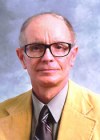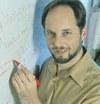
Sciencebase Exclusive – Careful experimentation and theoretical analysis of a double-slit experiment have finally quashed a controversy in fundamental physics — the complementarity-uncertainty debate.
Ever since the catflap to the quantum world was opened up to us and Schrödinger’s feline friend was idiomatically let out of the bag, to mix a metaphor or two, there have been more questions and controversies raised than conundrums solved in the world of the very, very small. How can something be both particle and wave, for instance? What allows particles of matter to tunnel through solid objects? And, how is the interference pattern destroyed in a double-slit experiment when measurements are performed on the path traversed by a particle?
What is a double slit experiment, you ask? Well, traditionally, Young’s double-slit experiment consists of shining a light through two narrow, closely spaced slits and observing the results on a screen placed beyond the slits.
Intuitively, you might think that the result would simply be two bright lines, aligned with the slits, representing where the light passes through the slits and hits the card. However, this is not seen in practice, instead, the light is diffracted by the slits and produces fringes corresponding to wave-like interference pattern. The fringes of light and dark regions correspond to where either the light waves constructively (add) and destructively (subtract) from each other. Two peaks in the light wave meet to make a brighter fringe whereas a dark fringe is formed when a peak and a trough coincide. This result seemingly settles a three-century conundrum about whether light is particle or wave, showing apparently that it is a wave.
However, a similar experiment carried out with beams of electrons or atoms fired through the slits produces a very similar interference pattern. How could that be? Particles are solid objects, surely? Well, the double-slit experiment shows that they are not. They produce an interference pattern, which suggests that the particles behave as waves.
The double-slit experiments work perfectly well and reveals interference patterns with light, electrons, and beams of other particles, but only if the experimenter does not try to find out through which slit a particular wave-particle passed before hitting the screen. Try to fire particles through the slits one at a time and as illustratd in the 5-minute video below, you will still see an interference pattern. It is as if each particle passes through both slits simultaneously, each slit individually and together and neither slit all at the same time; behaving some as waves…
As if this were not complicated enough, physicists reasoned that if they could discover which slit the individual particle really goes through each time in this experiment, they could solve the problem. So, they put a measuring device next to one slot and observed what happens as particles are fired through the slits one at a time. Astoundingly, the interference pattern disappears, simply having a measuring device present to observe the route taken by the particles somehow disturbs their wave-like nature and they revert to being tiny, solid objects and produce just two bands on the screen as if they were tiny marbles rather than wave. How could the particles know they were being watched.
This loss of interference has been explained by several of the biggest names in twentieth century physics, among them Niels Bohr and Richard Feynman. They suggested that whenever the path is measured within the double-slit, the momentum of the wave-particle is uncontrollably and irreversibly disturbed. Think about it, it has to be affected by the observer somehow because the very act of observing involves some kind of sharing of information either via photons, charge, energy or matter. This process “washes out” the interference fringes.
Most physicists simply accept this as being precisely what happens. It is a little vague and some might say “handwaving” because it does not pin down the nature of this washing out nor say anything about how the momentum is disturbed by the transaction between observer and observed. More precisely, it is simply what happens because of the back-reaction resulting from the Heisenberg uncertainty relation that says we cannot know simultaneously both the energy and position of any quantum wave or particle with absolute precision. While that kind of folds the argument into a loop, Feynman famously pointed out that, ‘No one has ever thought of a way around the uncertainty principle.’
But, not everyone was happy with this. In 1991,  Marlan Scully, Berthold-Georg Englert, and Herbert Walther (Nature 1991, 351, 111) suggested that a microscopic pointer could be used to carry out the observation in such a way that the very act of observation would not disturb the momentum of the particle and so bypass the uncontrollable and irreversible effects suggested by Bohr that leads to interference breakdown. However, Pippa Storey, Sze Tan, Matthew Collett, and Daniel Walls (Nature, 1994, 367, 626), countered this argument, demonstrating that no matter how small the observer nor how the measurements are made, momentum is affected and the interference pattern would disappear. A long and controversial debate has raged between the two scientific factions that back either the Scully or Walls teams.
Marlan Scully, Berthold-Georg Englert, and Herbert Walther (Nature 1991, 351, 111) suggested that a microscopic pointer could be used to carry out the observation in such a way that the very act of observation would not disturb the momentum of the particle and so bypass the uncontrollable and irreversible effects suggested by Bohr that leads to interference breakdown. However, Pippa Storey, Sze Tan, Matthew Collett, and Daniel Walls (Nature, 1994, 367, 626), countered this argument, demonstrating that no matter how small the observer nor how the measurements are made, momentum is affected and the interference pattern would disappear. A long and controversial debate has raged between the two scientific factions that back either the Scully or Walls teams.
A theoretical solution was posited by  Howard Wiseman and colleagues in 2003 (Phys Rev A, 2003, 311, 285) and refined in 2004 (J. Opt. B: Quant. Semiclass. Opt. 2004, 6, S506-S517). Now, in a seminal paper published today in the New Journal of Physics, Aephraim Steinberg together with Wiseman and colleagues Mir, Lundeen, Mitchell, and Garretson have applied the theory in a novel double-slit setup. Their experimental results suggest that, as is the way with all things quantum, both camps are equally correct and equally wrong. Somehow, you can have your quantum cake and eat it.
Howard Wiseman and colleagues in 2003 (Phys Rev A, 2003, 311, 285) and refined in 2004 (J. Opt. B: Quant. Semiclass. Opt. 2004, 6, S506-S517). Now, in a seminal paper published today in the New Journal of Physics, Aephraim Steinberg together with Wiseman and colleagues Mir, Lundeen, Mitchell, and Garretson have applied the theory in a novel double-slit setup. Their experimental results suggest that, as is the way with all things quantum, both camps are equally correct and equally wrong. Somehow, you can have your quantum cake and eat it.
They found that by using only weak measurements, they can directly observe the momentum transfer that causes interference breakdown but equally do so without disturbing the two-slit superposition. They effectively verify both the Scully and Walls views. In terms of the Scully position, the team shows that there is no change in the mean momentum, or the mean energy, whereas with respect to the Walls work, they show that the momentum is spread, as one would expect given the uncertainty inherent in the quantum world, according to Heisenberg’s principle.
Feynman always held that the double-slit setup was central to quantum theory, but would never be fully understood. This work by Wiseman and colleagues shows that the humble double-slit experiment can still throw up new quantum mysteries to baffle us.